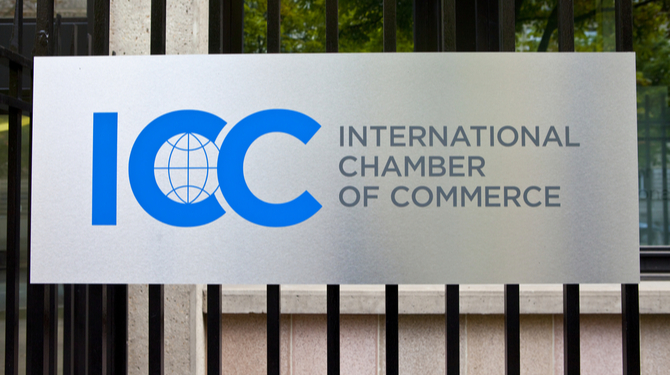Sign up for our free daily newsletter
YOUR PRIVACY - PLEASE READ CAREFULLY DATA PROTECTION STATEMENT
Below we explain how we will communicate with you. We set out how we use your data in our Privacy Policy.
Global City Media, and its associated brands will use the lawful basis of legitimate interests to use
the
contact details you have supplied to contact you regarding our publications, events, training,
reader
research, and other relevant information. We will always give you the option to opt out of our
marketing.
By clicking submit, you confirm that you understand and accept the Terms & Conditions and Privacy Policy
This Saturday, 3 December, marks the UN International Day of Persons with Disabilities.
Remarkably, even though at least 15% of the UK population has a disability, a recent open letter issued by the GCs of major corporations in the US and UK observed that only 0.38% of all lawyers in law firms are disabled.
This is not a criticism of the legal profession. Law firms, like companies world-wide, have taken great strides to promote diversity and inclusion as a strategic imperative. Unfortunately, the focus on people with disabilities has been further down the agenda. Recently, however, the discussion around disability inclusion has been gaining traction, as outlined in the previously mentioned open letter and highlighted by other recent initiatives and outlets (more of which below).
If the legal sector can continue to build on the progress it has already made, it can finally open up for itself access to a huge pool of motivated, resilient talent and a wellspring of diverse and creative thought. Here are six steps individuals and organisations can take to grasp that strategic imperative.
- De-stigmatize disabilities: We now celebrate gender, sexual and ethnic diversity in the legal profession (and rightly so) but a stigma still attaches to disability that means we do not afford it the same attention or profile. Research suggests that a third of people view the disabled as being less productive than the non-disabled. This misconception has profound implications in any working environment, but it is particularly impactful in the law where the bar is set high and the billable hour is still the typical measure of productivity.
We should start from the position that disability is a difference, not a weakness – and treat it accordingly. Furthermore, while it can be easy to see the challenges brought by having a disability, many overlook the positives that can exist. Some people have found that through managing their disability they have fine-tuned the skills required to be successful in their vocation, such as resilience, problem-solving and creativity.
The Global Legal Post’s Women & Diversity in Law Awards, which have a specific category for Disability Initiative of the Year, is a great example of how disability and disability initiatives can be openly celebrated.
- Highlight pathways to success: The stigma attaching to disability combined with the low number of disabled lawyers creates a situation where there is a paucity of disabled lawyers to act as role models for younger disabled professionals. We should look to give profile to such role models as are available, not only to normalise disabilities but to show that the paths to success are not insurmountable.
There are opportunities and outlets making strides, such as Aspiring Solicitors and The Social Mobility Business Partnership. Programmes supporting graduates from underrepresented groups (including those with disabilities and long-term health conditions) to access the profession – such as vacation schemes and training contracts, ad hoc mentoring, guidance and encouragement – can give the next generation of lawyers the confidence to pursue their legal careers.
- Be reasonable about reasonable adjustments: Many disabilities can be accommodated – and the playing field levelled – by the provisions of straightforward and often inexpensive adjustments to working conditions and environments. It should not be complicated or awkward to make such requests. Rather, the process should simple, visible and transparent, and subject to oversight by an appropriately trained member of staff, so that further adjustments and follow-up can be easily addressed. These principles are at the heart of the work of the ICC Task Force on Disability Inclusion, the brainchild of President of the ICC International Court of Arbitration, Claudia Solomon.
- Maintain open lines of communication: The spectrum of disability is wide, and the types of disabilities so diverse, that no one person or team can be expected to understand the requirements of every disabled individual within their organization. This is why it is imperative to have open lines of communication between the individuals with disabilities and those in a position to enact change. Failure to do so will result in (to give a real-life example) all the expenses incurred through installing a disabled toilet, with none of the utility when it transpires that the door cannot be opened unaided by a wheelchair user. These issues are avoided when people feel comfortable communicating their priorities and individual needs, and these specific (and often changing) needs are actively listened to by employers.
Furthermore, be mindful that while for some people their disability is constant and consistent, for others it can come and go, or develop over time, and non-disabled people can develop disabilities either on a permanent or temporary basis – in fact, 80% of disabilities are acquired. It is therefore imperative that all employees know where to go should they need to discuss access to support or adjustments, and it is not limited to single form in the onboarding process.
- Mind your language: No one should be constantly treading on eggshells with respect to the language they use to describe specific disabilities. But, just as society was once careless about the language it used to describe different sexualities, we can always aspire to be kinder and more courteous with the way we talk about those with disabilities.
How an individual chooses to identify and what terms they use to describe themselves can be influenced by a range of factors including (but not limited to) how long they have had the disability, whether it is visible or non-visible, the context of the situation and what discrimination they may have faced in the past. We suggest seeking clarification from each individual on the terms they prefer, and indeed, if they are comfortable with the word ‘disabled’ being used to describe them at all.
- Be constructively discontent: The legal profession has begun to move in the right direction on disability but, to ensure we maintain momentum, we need to remain constructively discontent with the state of disability inclusion. One way to do that is by looking at the pipeline of talent and being ambitious in the steps to encourage disabled applicants to apply. There are organisations out there that can help, such as MyPlus Consulting, but looking at ways firms and businesses can improve policies and approaches is something that should be fresh in the mind and constantly evolving.
Rosie Watterson is an associate at King & Spalding, student mentor and proactive advocate of diversity and inclusion. She was born with an upper limb difference.
Simon Maynard is a senior associate at King & Spalding and co-chair of the ICC Task Force on Disability Inclusion. He has a permanent stoma, following the removal of his colon.
the Women and Diversity in Law Awards, which are hosted by The Global Legal Post and take place in London on 21 March. For sponsorship enquiries email [email protected]
Email your news and story ideas to: [email protected]











